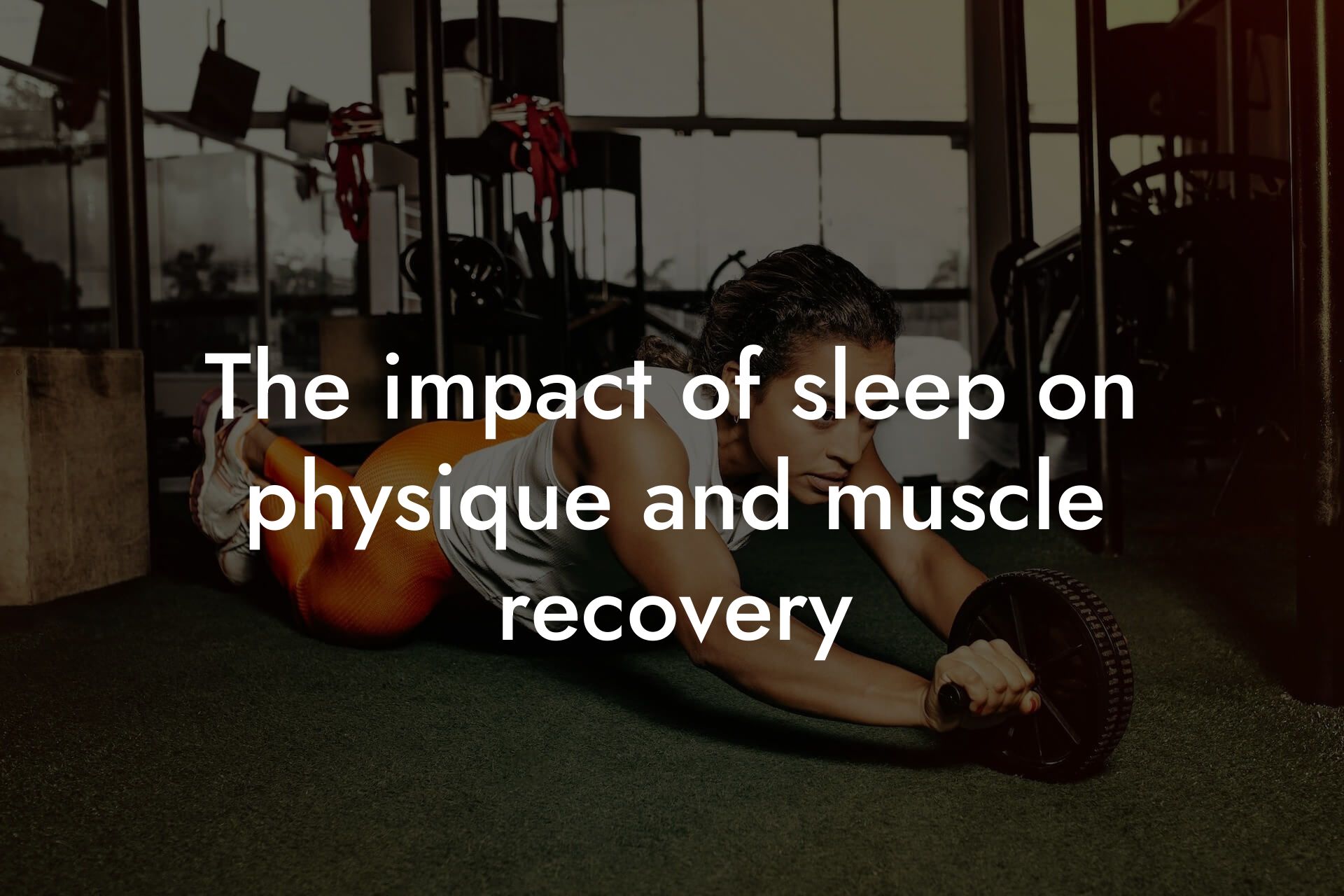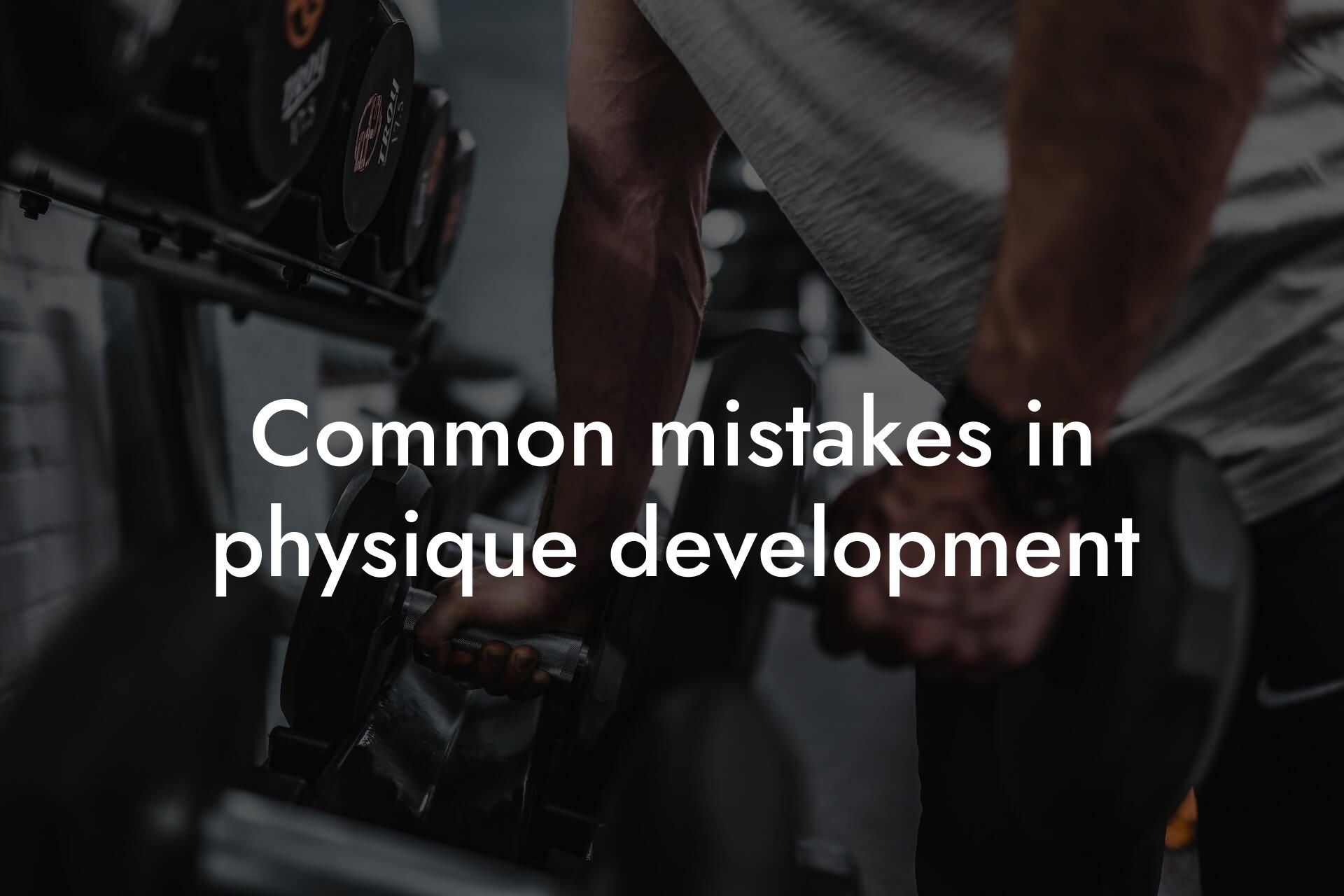As a high-earning professional, you understand the importance of presenting yourself in the best possible light. Your physical appearance can greatly impact your confidence, credibility, and overall success in your career. At Tano Performance Group, we specialize in helping professionals like you achieve their aesthetic goals through our comprehensive body assessment using a DEXA machine. In this article, we'll explore the importance of setting realistic expectations for your aesthetic goals and provide you with a roadmap to achieving the physique you desire.
Table of Contents
Understanding Your Why
Before we dive into setting aesthetic goals, it's essential to understand your motivations. Why do you want to improve your physical appearance? Is it to feel more confident in your own skin, to impress clients, or to keep up with the demands of your job? Whatever your reason, it's crucial to identify your "why" and use it as a driving force to stay committed to your goals.
Assessing Your Current State
To set realistic expectations, you need to understand your current body composition. Our DEXA machine provides a comprehensive assessment of your body fat percentage, lean muscle mass, bone density, and other vital metrics. This data will help you identify areas for improvement and create a personalized plan to achieve your aesthetic goals.
Setting SMART Goals
When setting aesthetic goals, it's essential to make them SMART: Specific, Measurable, Achievable, Relevant, and Time-bound. For example, instead of saying "I want to lose weight," a SMART goal would be "I want to reduce my body fat percentage from 25% to 20% within the next 12 weeks." Having clear, measurable goals will help you stay focused and motivated throughout your journey.
Understanding Body Fat Percentage
Body fat percentage is a critical metric to understand when setting aesthetic goals. A healthy body fat percentage varies depending on age, gender, and other factors, but generally ranges from 10-20% for men and 15-25% for women. Having a high body fat percentage can increase your risk of chronic diseases, such as diabetes and heart disease, while also affecting your physical appearance.
The Importance of Lean Muscle Mass
Lean muscle mass is another vital metric to consider when setting aesthetic goals. Having a high percentage of lean muscle mass can improve your overall physique, increase your metabolism, and enhance your athletic performance. Our DEXA machine can provide you with an accurate measurement of your lean muscle mass, helping you identify areas for improvement.
Bone Density: The Unsung Hero
Bone density is often overlooked when it comes to aesthetic goals, but it's a critical metric to consider. Having strong bones can improve your overall health, reduce your risk of osteoporosis, and even enhance your athletic performance. Our DEXA machine can provide you with a detailed analysis of your bone density, helping you identify areas for improvement.
Creating a Personalized Plan
Once you have a clear understanding of your body composition and aesthetic goals, it's time to create a personalized plan. This may involve working with a registered dietitian to develop a customized nutrition plan, creating a workout routine that targets specific areas of your body, or incorporating stress-reducing techniques to improve your overall well-being.
Overcoming Obstacles and Plateaus
Achieving your aesthetic goals is not always a linear process. You may encounter obstacles, such as injuries or plateaus, that can derail your progress. It's essential to stay flexible and adapt to changes in your body and environment. Our team at Tano Performance Group is dedicated to providing you with ongoing support and guidance to help you overcome any obstacles that may arise.
Maintaining Your Results
Once you've achieved your aesthetic goals, it's essential to maintain your results. This may involve continuing to monitor your body composition, making adjustments to your nutrition and workout plan, and staying committed to your goals. At Tano Performance Group, we offer ongoing support and guidance to help you maintain your results and continue to improve your physical appearance.
By setting realistic expectations, understanding your body composition, and creating a personalized plan, you can achieve the aesthetic goals you desire. Remember to stay committed, flexible, and patient throughout your journey, and don't hesitate to reach out to our team at Tano Performance Group for ongoing support and guidance. With the right mindset and tools, you can unlock your full potential and achieve the physique you've always wanted.
Frequently Asked Questions
What are aesthetic goals, and why are they important for professionals?
Aesthetic goals refer to the physical appearance and body composition aspirations that individuals strive for. For high-earning professionals, achieving their aesthetic goals can boost confidence, enhance their personal and professional brand, and even improve their overall well-being. At Tano Performance Group, we believe that setting realistic aesthetic goals is crucial for professionals who want to look and feel their best.
What are some common aesthetic goals for professionals?
Common aesthetic goals for professionals include losing body fat, building muscle mass, improving bone density, enhancing athletic performance, and achieving a more toned and lean physique. Some individuals may also focus on specific areas of their body, such as reducing belly fat or building stronger shoulders.
How do I set realistic aesthetic goals?
To set realistic aesthetic goals, it's essential to assess your current fitness level, body composition, and lifestyle. Identify areas you want to improve, and then set specific, measurable, achievable, relevant, and time-bound (SMART) goals. For example, "I want to lose 10 pounds of body fat in the next 12 weeks" is a realistic and achievable goal.
What is the importance of setting SMART aesthetic goals?
Setting SMART aesthetic goals helps you create a clear roadmap for success, stay motivated, and track your progress. It also helps you avoid unrealistic expectations, which can lead to disappointment and frustration. By setting SMART goals, you'll be more focused, committed, and likely to achieve your desired outcomes.
How can I measure my progress towards my aesthetic goals?
There are several ways to measure progress towards your aesthetic goals, including tracking your weight, body fat percentage, measurements, and progress photos. You can also monitor your performance in the gym, such as increases in strength or endurance. Regular assessments will help you stay on track, make adjustments, and celebrate your successes.
What role does nutrition play in achieving aesthetic goals?
Nutrition plays a critical role in achieving aesthetic goals. A well-balanced diet that provides adequate protein, healthy fats, and complex carbohydrates will support muscle growth, fat loss, and overall health. A customized nutrition plan can help you optimize your macronutrient intake, meal frequency, and supplementation to achieve your desired physique.
How does exercise impact aesthetic goals?
Regular exercise is essential for achieving aesthetic goals. A combination of resistance training, cardio, and high-intensity interval training (HIIT) can help you build muscle, increase metabolism, and burn fat. A well-structured exercise program will also improve your overall fitness, enhance athletic performance, and boost confidence.
What is the importance of consistency in achieving aesthetic goals?
Consistency is key to achieving aesthetic goals. It's essential to stick to your nutrition and exercise plan consistently over time to see noticeable improvements. Aim to make healthy habits a part of your lifestyle, rather than trying fad diets or quick fixes that can lead to disappointment and frustration.
How long does it take to achieve aesthetic goals?
The time it takes to achieve aesthetic goals varies depending on individual factors, such as starting point, goal intensity, and consistency. Generally, it can take several weeks to several months to notice significant improvements. Focus on making progress, not perfection, and celebrate small victories along the way.
What are some common obstacles that professionals face when trying to achieve their aesthetic goals?
Common obstacles that professionals face when trying to achieve their aesthetic goals include lack of time, inconsistent nutrition and exercise habits, unrealistic expectations, and inadequate support. Additionally, professionals may struggle with stress, sleep deprivation, and other lifestyle factors that can impact their ability to achieve their goals.
How can I stay motivated and accountable on my aesthetic journey?
Staying motivated and accountable requires a combination of goal setting, tracking progress, and seeking support. Consider working with a personal trainer, nutritionist, or fitness coach who can provide guidance, encouragement, and accountability. You can also join a fitness community or find a workout buddy to help you stay motivated and inspired.
What is the importance of patience and self-compassion when working towards aesthetic goals?
Patience and self-compassion are essential when working towards aesthetic goals. It's easy to get discouraged when progress is slow or when you encounter setbacks. However, it's crucial to focus on the journey, not the destination, and to practice self-compassion when you make mistakes or encounter challenges.
How can I balance my aesthetic goals with other aspects of my life?
Balancing aesthetic goals with other aspects of your life requires prioritization, time management, and flexibility. Learn to schedule your workouts, meal prep, and self-care activities into your busy schedule, and be willing to make adjustments as needed. Remember, your aesthetic goals should enhance your overall well-being, not compromise it.
What are some common mistakes that professionals make when trying to achieve their aesthetic goals?
Common mistakes that professionals make when trying to achieve their aesthetic goals include setting unrealistic expectations, following fad diets or quick fixes, and neglecting proper nutrition and recovery. Additionally, professionals may overtrain, underestimate the importance of sleep and stress management, or fail to seek guidance from qualified professionals.
How can I ensure that my aesthetic goals align with my overall health and wellness?
Ensure that your aesthetic goals align with your overall health and wellness by prioritizing healthy habits, such as balanced nutrition, regular exercise, and adequate sleep. Avoid extreme or unhealthy measures that can compromise your overall health, and focus on making sustainable lifestyle changes that promote overall well-being.
What role does stress management play in achieving aesthetic goals?
Stress management plays a critical role in achieving aesthetic goals. Chronic stress can lead to increased cortisol levels, which can hinder fat loss, muscle growth, and overall health. Engage in stress-reducing activities, such as meditation, yoga, or deep breathing exercises, to help manage stress and support your aesthetic goals.
How can I get support and guidance on my aesthetic journey?
Get support and guidance on your aesthetic journey by working with qualified professionals, such as personal trainers, nutritionists, or fitness coaches. You can also join online fitness communities, attend workshops or seminars, or seek guidance from trusted resources like Tano Performance Group.
What is the importance of celebrating small victories on my aesthetic journey?
Celebrating small victories on your aesthetic journey is essential for staying motivated and encouraged. Acknowledge and celebrate your progress, no matter how small, to help build confidence, reinforce positive habits, and stay committed to your goals.
How can I maintain my aesthetic goals over time?
Maintaining your aesthetic goals over time requires a long-term commitment to healthy habits, consistent effort, and ongoing education. Stay flexible, adapt to changes, and continue to challenge yourself to ensure that you maintain your desired physique and overall well-being.
What is the role of mindset in achieving aesthetic goals?
Mindset plays a crucial role in achieving aesthetic goals. A positive, growth-oriented mindset can help you stay motivated, focused, and committed to your goals. Develop a mindset that emphasizes self-care, self-compassion, and self-improvement to support your aesthetic journey.
How can I stay accountable and motivated during periods of plateau or setback?
Stay accountable and motivated during periods of plateau or setback by reassessing your goals, seeking guidance from professionals, and making adjustments to your nutrition and exercise plan. Focus on progress, not perfection, and celebrate small victories to help you stay motivated and encouraged.
What is the importance of self-care in achieving aesthetic goals?
Self-care is essential in achieving aesthetic goals. Prioritize activities that promote relaxation, stress reduction, and overall well-being, such as meditation, yoga, or spending time with loved ones. A well-cared-for body and mind are essential for achieving and maintaining your desired physique.
Here are some related articles you might love...
- The impact of sleep on physique and muscle recovery
- Common mistakes in physique development
- Top workouts to enhance your physique
- Building a professional physique: A guide for busy professionals
- The role of genetics in physique development
- Muscle toning vs building: What’s the difference?
- How your physique impacts your confidence and career
- Best supplements for improving physique
- How to maintain a lean physique year-round
Zak Faulkner
Zak Faulkner is a leading authority in the realm of physical health and body composition analysis, with over 15 years of experience helping professionals optimise their fitness and well-being. As one the experts behind Tano Performance Group, Zak has dedicated his career to providing in-depth, science-backed insights that empower clients to elevate their physical performance and overall health.
With extensive knowledge of DEXA technology, Zak specializes in delivering comprehensive body assessments that offer precise data on body fat, muscle mass, bone density, and overall physique. His expertise enables individuals to make informed decisions and achieve their fitness goals with accuracy and confidence. Zak’s approach is rooted in a deep understanding of human physiology, combined with a passion for helping clients unlock their full potential through personalised strategies.
Over the years, Zak has earned a reputation for his commitment to excellence, precision, and client-focused service. His guidance is trusted by top professionals who demand the best when it comes to their health. Whether advising on fitness programs, nutritional strategies, or long-term wellness plans, Zak Faulkner’s insights are a valuable resource for anyone serious about taking their health and fitness to the next level.
At Tano Performance Group, Zak continues to lead our Content Team revolutionising how professionals approach their physical health, offering unparalleled expertise that drives real results.




